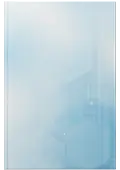Volume Insights on Insulation Coating Sector
The global Insulation coating sector volume projection was valued at 7,383.6 kilotons in 2023 and is projected to reach 12,652.1 million units by 2033, registering a CAGR of 5.6% from 2024 to 2033.
Volume Insights Strategic Overview
Allied Market Research announces the release of its comprehensive analysis of the global insulation coating market. The growing demand for energy efficiency is a major driver for the insulation coating sector. As energy costs continue to rise, industries and commercial sectors are increasingly focusing on energy conservation to reduce operational expenses. Insulation coatings play a crucial role in enhancing thermal insulation, minimizing heat loss, and improving overall energy efficiency. By reducing the amount of energy required for heating and cooling, these coatings help businesses lower their carbon footprint while complying with stringent environmental regulations. In addition, the adoption of insulation coatings aligns with global sustainability initiatives, making them a preferred choice across various industries, including manufacturing, construction, and transportation.
Advancements in coating technologies are significantly shaping the insulation coating sector, with a strong focus on innovation and sustainability. The development of nanotechnology-based coatings has revolutionized thermal insulation by offering superior heat resistance, enhanced durability, and lightweight properties. These advanced coatings provide improved thermal efficiency, reducing heat transfer more effectively than traditional insulation materials. Their nanoscale composition allows for better adhesion, increased resistance to wear and tear, and extended lifespan, making them a cost-effective solution for various industries.
The report highlights the expanding energy storage applications. The growing demand for sustainable construction is creating significant opportunities for the insulation coating market. As the adoption of green buildings and smart infrastructure increases, the need for energy-efficient materials, including advanced insulation coatings, is on the rise. These coatings play a crucial role in enhancing thermal insulation, reducing energy consumption, and improving the overall sustainability of buildings. With a focus on reducing carbon footprints and optimizing energy use, construction companies are increasingly integrating insulation coatings into their projects to meet global sustainability goals.
The global volume of acrylic type is expected to grow from 3,062.2 kilotons in 2023 to 5,020.6 kilotons by 2033, registering a CAGR of 5.1% over the forecast period. Acrylic insulation coatings help in minimizing heat transfer, making them an effective solution for temperature regulation in buildings, industrial equipment, and transportation systems. Their ability to withstand environmental stresses, such as UV exposure and moisture, further enhances their performance, making them suitable for both indoor and outdoor applications. The water-based nature of many acrylic insulation coatings makes them environmentally friendly and easy to apply without the need for specialized equipment.
Regional Insulation Coating Sector Volume Growth
Asia-Pacific dominated the insulation coating market with 45.4% share in 2023 with a CAGR of 6.0%, while North America, Europe, and LAMEA are expected to show strong growth at 5.1%, 5.3%, and 5.6% CAGR, respectively, driven by regional insulation coating trends.
The regional analysis highlights significant variations in adoption trends and market potential across the globe. Asia-Pacific leads the market, contributing over 46% of the total volume in 2024 and expected to grow at a CAGR of 6.0%, driven by increasing demand for corrosion protection in countries such as China, India, and Rest of Asia-Pacific. North America, led by the U.S. and Canada, is projected to maintain steady growth at a 5.1% CAGR, fueled by innovations in nanotechnology, aerogel-based coatings, and self-healing insulation coatings enhance product performance, making them more attractive for industrial applications. Europe, with key players such as Germany, France, and Italy, is expected to grow at a 5.3% CAGR, supported by expansion of renewable energy sector, insulation coatings are increasingly used in wind turbines, solar panels, and geothermal plants to improve thermal management and efficiency. Meanwhile, LAMEA presents a substantial growth opportunity with a 5.6% CAGR. The key drivers of this growth include increasing adoption in oil & gas sector boosting the adoption of insulation coating in countries such as Brazil, UAE, and South Africa.
Insulation Coating Sector Volume Growth, By Region, 2023-2033 (Kilotons)
Region | 2023 | 2027 | 2033 | CAGR (2024–2033) |
North America | 2,097.9 | 2,531.5 | 3,433.6 | 5.1% |
Europe | 1,370.2 | 1,668.9 | 2,297.1 | 5.3% |
Asia-Pacific | 3,349.5 | 4,175.6 | 5,948.7 | 6.0% |
LAMEA | 566.1 | 696.3 | 972.7 | 5.6% |
Total | 7,383.7 | 9,072.3 | 12,652.1 | 5.6% |
Insulation Coating Sector Country Sales
U.S. and the China lead the insulation coating market and are projected to reach 2500.6 kiloton and 2291 kiloton, respectively, by 2033 at a CAGR of 5.4% and 13.4%, respectively. India is the fastest growing country followed by Australia in terms of CAGR, where India witnesses rapid growth due to surge in demand for fireproof & high-temperature coatings.
The report identifies U.S. and the China as the largest contributors to the insulation coating market in terms of volume. In China, the development of smart cities is accelerating the adoption of multi-functional coatings that offer insulation, anti-corrosion, and self-cleaning properties, enhancing energy savings and durability, where insulation coating is projected to reach 2291 kiloton by 2033, achieving a CAGR of 5.4%. However, the U.S., remains an important player in North America, growing with a CAGR of 5.0% by 2033.
Australia’s marine industry is experiencing significant growth, driven by increasing trade activities, offshore oil and gas exploration, and the expansion of naval and commercial shipping operations. As the industry evolves, the demand for advanced insulation coatings is rising, primarily due to their ability to enhance thermal efficiency, reduce maintenance costs, and provide long-term protection against corrosion in harsh marine environments. Australia is expected to grow at a CAGR of 6.6%, the highest among major countries.
Insulation Coating Sector Volume Share, By Country, 2023-2033 (Kilotons)
Country | 2023 | 2027 | 2033 | CAGR (2024-2033) |
China | 1865.4 | 1655.7 | 2291 | 5.4% |
India | 873.4 | 827.2 | 1235 | 6.8% |
Australia | 232 | 217.8 | 322 | 6.6% |
U.S. | 1545.2 | 1856.1 | 2500.6 | 5.0% |
Germany | 220.4 | 269.8 | 374.3 | 5.5% |
France | 346.9 | 412.5 | 546.9 | 4.7% |
UK | 326.4 | 392.2 | 528.7 | 5.0% |
Brazil | 169.8 | 208.6 | 290.8 | 5.6% |
Countries such as China, Japan, and South Korea are leaders in the adoption in data centers & IT infrastructure. These facilities house critical IT infrastructure, including servers, storage systems, and networking equipment, all of which generate significant amounts of heat. Efficient thermal management is crucial to maintaining optimal performance, preventing overheating, and reducing energy consumption. Insulation coatings also contribute to the longevity and reliability of data center infrastructure. Excessive heat and temperature fluctuations can lead to premature wear and tear on servers, storage devices, and other electronic components, increasing the risk of system failures and costly downtime.”
Surge in Anti-Condensation Coatings in Insulation Coating Sector Volume Trends
The report also emphasizes the increase in demand for anti-condensation coatings, which drives the growth of the insulation coating sector. Insulation coatings are increasingly being adopted in HVAC systems, refrigeration units, and cold storage facilities to address one of the most persistent challenges: condensation. In environments where temperature fluctuations are common, condensation can cause significant operational problems, including equipment damage, mold growth, and energy inefficiency.
Furthermore, the study discusses industry-specific standards of the insulation coating market. The construction industry is undergoing a significant transformation as the demand for high-performance, durable materials continues to grow. Among the various solutions gaining traction, insulation coatings that offer waterproof and weather-resistant properties are becoming increasingly popular. Waterproof and weather-resistant insulation coatings provide an additional layer of protection for buildings, ensuring that walls, roofs, and foundations are shielded from moisture ingress, which can cause structural damage over time. In regions prone to heavy rainfall, flooding, or high humidity, the need for such coatings is particularly critical.
About Allied Market Research
Allied Market Research is a full-service research and business consulting firm that provides actionable insights and strategic recommendations to help clients make informed decisions and achieve sustainable growth. For more inquiries, please visit alliedmarketresearch.com.
About Allied Market Research
Allied Market Research is a full-service market research and business consulting firm, which provides actionable insights and strategic recommendations to help clients make informed decisions and achieve sustainable growth. For more inquiries, please visit alliedmarketresearch.com


